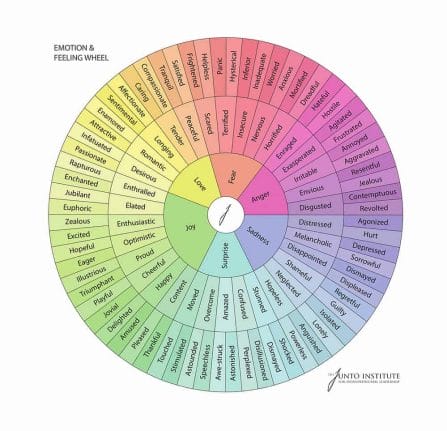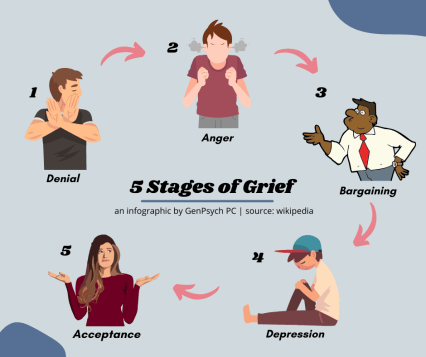Whether you stopped playing your sport in high school, college, or professionally, there is a road ahead for the retired athlete. Struggle can occur within the former athlete, and this struggle brings up a lot of emotions.
Much like major transitions in other areas of your life, retiring from your sport will bring on feelings of grief and loss. Here are typical emotions that can be brought up for a retired athlete:
- Sadness
- Anger
- Loneliness
- Isolation
- Anxiety
- Depression
- Grief
- Emptiness
- Lack of direction/purpose/fulfillment
- Bored
- Lack of mental stability
Processing the end of your sport can be challenging. It is important to remember that the sport is something you did; it is not who you are. Do you feel like you fall into the category of a retired athlete? Do you feel any of the emotions listed above?
Table of Contents
Mental Health Stigma Surrounding Athletes
If you saw someone with a broken leg, you would likely take their injury seriously and get them the help they need to work toward healing their leg (e.g., get them to the hospital, get them a cast, take them to physical therapy appointments). Unfortunately, our society tends not to take an athlete’s mental health as seriously as a broken leg. Take, for example, the kickback that Simone Biles’ received for dropping out of the 2021 Olympics for mental health reasons. Although this was a big step in the right direction for athletes, there is still a long road ahead in establishing mental health as just as important as physical health for athletes.
The mental health side of an athlete and the damage their sport can cause them can be difficult for people to understand. The reality is that a broken leg and mental health can hinder an athlete’s performance equally. Mental toughness has been praised in the athletic realm. Being able to “push through” and never “quit” has been the motto of many athletic organizations. A person who has mental toughness is usually praised and admired because they can perform in their sport. An important question to ask is, when does mental toughness become harmful to an athlete’s mental health? Luckily, the stigma around mental health is starting to change, and it is slowly moving into athletics.
Thanks to the athletes who have started to speak up about their mental health issues while playing their sport, the stigma around mental health has recently gained attention and attraction to the public. As a society, we are starting to understand the importance of mental health and its relation to the physical body. Regarding athletes mental health, we are still behind in recognizing how harmful the stigma can be to athletes.
Student-Athlete Mental Health Statistics
The sports industry as a whole has many areas where improvement can occur. Many athletic organizations lack education and funding towards mental health and don’t have the resources to identify and treat athletes struggling with their mental health. Research in the 2016 American College Health Association National College Health Assessment showed that athletes reported that out of 21,000 Division I, II, and III college athletes from 600 different schools, mental health issues were not “uncommon” for them. Student-athletes are susceptible to mental health crises that can play out through stress, eating disorders, burnout, or depression and anxiety.
According to the National Collegiate Athletic Association, out of all college students, 33% experience significant symptoms of depression, anxiety, and other mental health conditions. Out of the 33% of people listed above, only 30% seek help and support. What is alarming is that out of the 33% of college students that are experiencing mental health problems, only 10% of student-athletes speak up and seek support. It is shown that student-athletes are less likely to seek help regarding their mental health. This could be from feelings of shame, guilt, embarrassment, or loneliness. Breaking the stigma surrounding mental health can be done by bringing awareness to the problem and normalizing it as an issue. Educating ourselves and the people around us about the stigma placed on athletes can spark change surrounding the stigma.
Mental Health Struggles For Retiring Athletes
Now that we have addressed the stigma of mental health within athletics let’s discuss possible mental health struggles you may come across as you retire from your sport.
Have you been struggling with your mental health since leaving your sport? Did you struggle with your mental health while playing your sport, and these struggles have continued even after you retired?
Mental health is an area within athletics that needs to be explored deeper.
Throughout their athletic careers, athletes are told to never quit and to hide their emotions, that emotions don’t belong in sports. They are told to push forward even when their body and mind are telling them to stop. So much of being an athlete is mental: mentally preparing yourself for the competition, getting your head in the game for peak performance, not letting outside messaging impact you (e.g., “you’re not good enough,” “you’re too old,” media’s comments about women’s clothing or body versus their athletic capabilities and finesse, media’s comments about men’s athletic capabilities based on the color of their skin not their performance, etc.), building yourself up telling yourself you can do this, getting in the zone, putting your personal life to the side to focus on the task at hand. To be a good athlete, individuals must be in a strong mental state to be able to do these things I just mentioned. If the athlete is not feeling confident, if they’ve had issues in their personal life, if they’re consumed with a physical issue, or if the pressure from coaches, family, media, fans is too loud, an athlete struggles to stay mentally fit for the competition. These things have the potential to weigh on the athlete in damaging ways.
Pushing down your emotions can be helpful during competition, but it can be detrimental outside of competition. Too often, athletes are told to push their emotions down as not to appear “weak,” to push on, and worry about it later. There is a compartmentalization that happens for many athletes. They can smoothly step out of the emotion and into the competition. However, the messaging after the competition isn’t “you felt scared that last 20 minutes or so, do you need to talk about it? Or, “I could tell there was something going on for you emotionally during this competition; give yourself some space to sit with it for a bit.” Instead, athletes get interviewed about their performance or the competition. They are pressured to show up for the press and fans right away without any time to themselves to take in what just happened. Pushing down your emotions, whether you are an athlete or not, is difficult!
The truth is when we push down our emotions, it can lead to several issues! Emotions can present themselves as physical. Suppressing your emotions puts physical stress on the body and is proven to affect blood pressure, self-esteem, memory, chronic illness, and so much more! When anyone buries their emotions, they must come back to them, address and process them, so they do not impact us in a way that we don’t want them to.
Are you struggling with getting in touch with your emotions because you were told to suppress them when playing your sport? It feels so easy to just push your emotions aside and move forward, Yet, you notice them creeping back up in ways that you don’t want them to. Maybe you project your anger at a loved one when really you’re angry about something else, or you carry the stress and weight of your emotions in your shoulders. You’ve gone to a specialist who says there’s nothing wrong with your shoulders but you feel pain in them every day. This may be your body holding onto the emotions and it’s a sign that you need to process them and let them go.
Ways to Practice Getting In Touch With, Processing, and Expressing Your Emotions
If you were told to push down your emotions while playing your sport but were not able to express your emotions to your coach, trainer, or teammates then this section can help you start to do just that. Expressing your emotions can be extremely beneficial to not only your mental health but your physical health as well.
Ways to practice exploring and expressing your emotions:
- Body Scan
- Check-in and see how your body is feeling right now. Take a few minutes and use a body scan technique to reconnect with your body and inner self. Allow yourself the space to check in with your body with no judgment. Try the app headspace for a guided body scan session.
- Things to look for:
- Is there a part of your body that is achy
- Is there a part of your body that is numb
- Do you feel butterflies in your stomach?
- Is there a pattern to these feelings in your body (i.e., when you feel anxious, you feel pain in your chest, or when you feel excited you feel the butterflies in your stomach)
- Common feelings:
- Chest is tight/heavy
- Stomach has knots in it or butterflies
- Shoulders are stiff or have dull pain
- Limbs are numb (arms, legs, feet, hands)
- Your head feels foggy or has racing thoughts or a pounding headache
- You’ve developed a chronic illness
- Your chronic illness symptoms have gotten worse
- Example of body scan technique:
- Close your eyes and focus on your body
- Go to each of your body parts and ask it how it is feeling, is there something it’s trying to tell you?
- Listen to your body, is it making noise or speaking through pain or discomfort?
- Do you notice if you’re hungry or thirsty?
- How does your skin look? Pale, discolored, cracked, dry, bruise easily
- What does your hair look like? Broken, thin, falling out
- How are your fingers and toenails doing? Are they brittle, do they have white spots, are they yellow?
- Things to look for:
- Check-in and see how your body is feeling right now. Take a few minutes and use a body scan technique to reconnect with your body and inner self. Allow yourself the space to check in with your body with no judgment. Try the app headspace for a guided body scan session.
- Look at the Emotion & Feeling Wheel
- Use the emotion and feeling wheel to first label how you are feeling
- The innermost circle is our 6 basic emotions: Fear, Love, Joy, Surprise, Sadness, or Anger.
- The outermost circles are deeper, more descriptive emotions.
- Now that you’ve labeled the emotion, work to understand and process it by asking yourself specific questions. Try to stay away from “why” questions.
- When did I first notice this feeling presenting itself?
- What was going on before I felt this way, during the feeling, and after the feeling?
- What story did I tell myself about my environment and what was happening at the time of the emotion that would have led me to feel this way?
- Do I think this story is correct or is there another story that I could tell myself that would elicit a different emotion that might feel better to me?
- Have I felt this way in the past? If so, what was happening then, is it similar to right now?
- What did I do in the past to work through this emotion? Can I do that same thing now?
- Where do I feel this emotion in my body?
- What do I need while I sit in this emotion?
- What do I need to help me get through this emotion and move forward?
- Am I placing blame on someone for my emotion? How can I own what is happening to me so that I can feel empowered to get through this emotion on my own

3. Use “I” statements
-
- Practice using “I” statements instead of “you” statements.
- For example: “I feel upset right now because I heard you say you didn’t love me.”
- This will help you become more aware of how you are feeling in the current moment.
- This will also allow anyone else involved to clarify what they are saying if you hear it differently than how they meant it.
- For example: “I feel pressured to complete this competition because my fans will be so disappointed.”
- Ask yourself what the evidence to your fans being disappointed is.
- What does this pressure do to you? How do you feel it in your body?
4. Be kind to yourself
-
- Let go of judgment and allow yourself permission to feel your emotions. Give yourself permission to feel whatever you are feeling in the current moment.
- Speak nicely to yourself. Be compassionate. Yes, even your internal dialogue that no one else hears should be kind.
- Create a consistent effort to implement these steps into your daily routine
-
- Use a body scan, I statements, and let go of judgment on a consistent basis to help express your emotions to better your mental health.
- Set a timer to check in with yourself and to perform one of these tasks
Dealing With the Loss of Identity
Most likely, one of the most common feelings you’ll find yourself experiencing when retiring is a sense of a loss of identity. Many people can relate to the loss of identity, you are not alone. It can feel like you lost a part of yourself when you retire from your sport. For some people, sport and athleticism become their whole identity which can be damaging to their overall wellbeing. When it’s over, you feel a great sense of loss, a lack of direction, or an emptiness. You question who you are, what you’re about, and what’s next? Doubt starts to consume you. There is a discomfort to your day that is difficult to sit with.
Dealing with the loss of an identity that was a part of you for years can take time to transition into the new version of yourself. People often find their purpose tied in with their identity. When you lose your identity, you may then lose your sense of purpose or direction. Not having a clear purpose or direction can lead to confusion and it can bring up a lot of emotions.
The road ahead for the retired athlete can be tricky, emotional, and challenging. By recognizing the road may be hard, you can start to take ownership of your future. Additionally, it is important to understand that you are not alone and that there is support out there for you. The National College Athletic Association reported that only 56% of athletes are “thriving” after sports. Looking at this number means that 44% of former college athletes are struggling after sports. If you fall into either of these categories, understand that it is ok and you are allowed to feel however you want.
Dealing with the loss of identity isn’t a linear process and there is no rule book on how to process the transition after sports. For many, working through grief and loss can be more circular where one day you might feel angry and the next you may feel sad only to feel angry the following day. These emotions will come and go and there is no predicting them. Instead, try to lean into them and be present with them. Let them out by talking about them, journaling, or feeling them in your body.
Owning the Grief and Loss of being a Retired Athlete
Most teams, coaches, and organizations don’t prepare you for the rush of feelings you experience when you finish your sport. A lot of athletes aren’t aware of the grief and loss that you can experience from retiring. There is a grieving process that an athlete needs to go through, whether they are prepared or not when facing their sport. This process has no direct endpoint and it can be ongoing.
What is important for an athlete to do when they retire is to recognize the loss. By recognizing the loss you are giving yourself time to think about it. Thinking about the end of your sport and what that means for you moving forward can be a hard thought to have, but it is necessary for you moving forward. By ignoring the reality of your life without your sport, you will find it harder to move on. Accepting that your sport is no longer in your life can trigger unexpected emotions and reactions, resulting in you feeling lost or even confused. Try to understand that you are on your own path and accepting the loss of your sport is unique to you.
It can be helpful to learn about the cycle and phases of grief. You might think that grief and loss can only be there when losing a loved one. Yes, you can experience a tremendous amount of grief and loss when losing a loved one. However, you can also experience a great amount of grief and loss when you lose something that was a part of you for so long. Examples of losing something other than a loved one would be a job, pet, friendship, cherished dream, or in this case a sport.
It is important to remember that your loss is real and you are allowed to feel it. The five phases of grief include Denial, Anger, Bargaining, Depression, and Acceptance. Earlier research described these phases in a linear way. However, now we know that individuals can experience these phases differently in no particular order. For instance, a person may wake up feeling angry one day and the next sad followed by a day of anger again. When looking at the phases of grief, you might be able to place yourself in one of them.
5 Phases of Grief
Within the 5 phases of Grief, you can experience…
- Denial: In disbelief that this is happening to you. Feeling like tomorrow things will feel “normal”
- Anger: Why is this happening to me? Who can I blame for this? This is so stupid. The pit in my stomach is heavy, I keep making fists.
- Bargaining: What if…? Make this not happen in exchange for…
- Depression: I am upset and feeling intense sadness
- Acceptance: I’m at peace with what happened
If you are experiencing any of these emotions since retiring from being an athlete, it is ok! You are allowed to experience grief and loss. You don’t need to experience these emotions in order because your grieving experience is unique to you.
Physical and Emotional Symptoms of Grief
You can experience physical and emotional symptoms of grief. Physical symptoms can include insomnia, headaches, body pain, weight changes, and fatigue. Emotional symptoms of grief can include guilt, shock, sadness, and anger. Experiencing symptoms of grief is to be expected when you retire from being an athlete.
Being aware that you may experience grief and loss can prepare you and help you come to terms with retirement. Mourning grief and loss can look different to many people. Becoming aware of what your body and mind need while going through the mourning process can be extremely beneficial. Ways to look after yourself when mourning the loss of your sport are based on what you need.
Things that can be helpful for you moving forward when you are mourning include looking after your physical and mental health, maintaining or joining new clubs/ hobbies, communicating to the people close to you when you are struggling, seeking support groups, being honest with yourself, and so much more. Owning the grief and loss is an important step to take when looking at the road ahead for the retired athlete.
Body Confidence
Do you feel pressure to look the same as you did when you played your sport? Another big issue retired athletes find themselves experiencing is feeling confident in their bodies.
Body image is a really important topic for athletes. Athletes can feel pressured to look a certain way or weigh a certain number on the scale. They strive to get their bodies to have peak performance at all times. Athletes focus on nutrition to improve their performance. It can become obsessive at times, constantly being on your mind.
Without the competition driving the direction for body composition, body confidence can become a problem when you retire from your sport. You don’t have to work out the same, your eating habits should change, and your overall body movement will most likely decrease due to not being involved in your sport at the level you were when you were competing. It is normal for your body to change because you are living your entire life differently. As an athlete’s body changes, they may begin to deal with body confidence issues, which are important to address to make a smooth transition into retirement.
5 Steps to Body Confidence:
- Don’t compare yourself to other bodies
- Comparing yourself to others can be exhausting and can have negative effects on the way you view your body. Every person is different in their own way. Try to embrace yourself for who you are, and learn to stop comparing yourself to others.
- This also includes not comparing yourself to your own body when you were at the height of your sport. Bodies can change for various reasons (you don’t need your body to perform the way you used to, pregnancy and childbirth, broken or injured a body part, mental health issues, aging).
- Identify what you like about yourself
- Point out certain areas of your life and body that you like. It is important to see and recognize the good in ourselves and our bodies. By identifying good things you see not only in just your body but your entire self will help drown out the negative words.
- Surround yourself with people who make you feel good
- By surrounding yourself with people who make you feel good about yourself you will notice a change in the way you view yourself. We don’t have time to be surrounded by people who bring us down! You deserve to be surrounded by people who make you feel good and bring you up.
- Accept who you are right now
- Playing your sport is something you did, it is not who you are. Instead of putting your energy into thinking about who you were, think about who you are right now. Where you are now is exactly where you should be. Try to let negative thoughts just be thoughts without feeding into them and allowing them to drive how we feel and our behaviors. Recognize that you are enough at this very moment.
- Write down things that you are grateful for
- Make a list of things that you are grateful for. By making a list you are training your brain to focus on the good things instead of the bad. Write down things that make you happy and put your energy into thinking about the good.
- You may want to create a list specific to your body. For instance, someone who was able to give birth to their child might be grateful for their reproductive health even if they have a scar from their c-section. Or, someone who had an injury might be grateful that they got to slow down and enjoy time with their loved ones because they weren’t traveling and competing as much.
Trying out these 5 steps can help with body confidence. As an athlete, your body performs constantly under pressure, fatigue, injury, and stress. Transitioning this power over your body to using it to achieve relaxation, stability, and well-being is crucial in learning how to love and cherish your body. The transition from an athlete to a retired athlete can be difficult when having body image issues.
For further information on body confidence check out Victoria Garrick, a former USC Division I Volleyball athlete. Victoria shares her inspirational story of how she learned to love her body as a female athlete. She speaks from her perspective as a former female division I athlete and she also speaks about the rough transition she experienced from athlete to retired athlete. Victoria gave a Ted Talk on Athletes and Mental Health: The Hidden Opponent.

Reintroduce Another Way to Train
Competition in life never stops regardless if you are still in your sport or not. You are always competing in the workplace, professionally, and personally. Competition can be used in a healthy way if used correctly. It takes practice being able to transform the competitive inner drive into a healthy form of competition. Retired athletes face different challenges and obstacles on the road to redefining themselves outside of their sport. With these challenges and obstacles, it can be easy to focus on the hard and negative aspects. There are positive sides to being an athlete. Being an athlete taught you a lot of valuable lessons that you can take with you in life. Taking the lessons and using what you have learned into the real world can have positive effects. Everything translates from you being an athlete into the real world. Your drive, communication, and work ethic all translate into your personal and professional life.
Life Tools You Have From Being An Athlete
- Commitment
- Being committed is important in the athletic world. Being committed to not only yourself but to the people around you is crucial for success. Commitment teaches you to have self-discipline and accountability.
- Time Management
- Having the life tool of time management is very important. Being an athlete has forced you to be able to manage your time in a way that allows you to accomplish everything in your day.
- Teamwork
- Over the years of being an athlete, you have learned how to give and receive support. How to hear feedback, even when it was difficult. You’ve been able to recognize when to step up or step back for the team’s greater good. Being able to work on a team has many benefits that you can bring into your professional life. In the working world being able to work together is a skill that is needed for many occupations.
- Learning From Failure
- Being an athlete has taught you that you don’t always win. It is ok to fail because you learn from these experiences and build on them for the next time. Failure is a part of your success story because of the lessons learned along the way.
- Communication
- The skill of communication is a huge skill in real life. Being able to properly communicate is an important factor in your relationship with the people around you.
- Having the ability to communicate effectively with your boss and coworkers is very similar to when you communicated with your coach and teammates.
- If you look back on your time as an athlete, you might have encountered a teammate or coach that you didn’t get along with. You may have taken space to work this out with them. What is important to notice is that you were still able to communicate and respect each other to put the team first.
- You learned to communicate effectively under pressure and time constraints, which will come in handy professionally.
Conclusion
The road ahead for the retired athlete is not linear. You may experience some of these things multiple times or just once. Some people might take weeks to learn how to deal with the loss of their sport, and others may take years. Wherever you are on the journey of being a retired athlete is perfectly okay; not everyone is on the same path.
With the help of a clinician at The Better You Institute, you can learn to deal with the loss of your sport and help develop a sense of Self. Call today and make an appointment and talk with a therapist for adjustment and grief and loss in Philadelphia at 267-495-4951. Whether you want to come in for individual counseling or you would like to do group counseling, a clinician on our team can help you with the road ahead as a retired athlete and self-improvement counseling.
Meet The Author:

Claire Savage, M.Ed
Professional Counselor
Claire Savage, M.Ed, a Professional Counselor and Practicum and Intern Liaison, is known for her caring and open-minded nature. Her background as a first-generation Irish American has shaped her focus on identity development in therapy, helping clients understand their passions, purpose, and values. Drawing from her Division I Rowing experience at Temple University, Claire emphasizes the importance of mental health and the role of failure in personal growth. She approaches therapy like a puzzle, using person-centered, experiential, somatic, emotionally focused, and cognitive behavioral approaches to help clients gain new perspectives and control over their lives. Claire holds a Bachelor’s and Master’s in Counseling Psychology from Temple University. Passionate about Philadelphia, she enjoys exploring coffee shops, attending workout classes, and spending time with loved ones. Claire is dedicated to guiding clients on their wellness journey.
Learn more about Claire Savage ⇒







